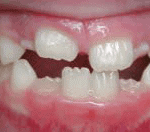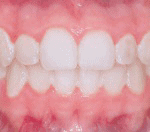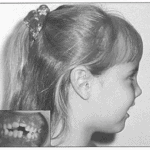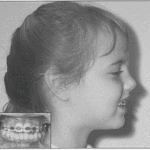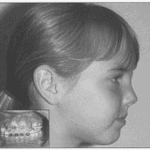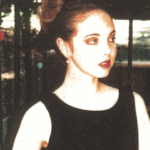In the article “Orthodontics…What Age?” I discuss the benefits of early or Two Phase Orthodontic treatment. Usually, early treatment involves obtaining necessary diagnostic records such as models of teeth, photographs and growth analysis. Predictions can be made regarding nose, upper and lower jaws and chin. The analysis tells us what will happen to the face—both with and without treatment. I am very interested in smile analysis which allows me to observe:
- How much gum tissue is shown
- The smile line (it is possible to have straight teeth without having a good smile)
- The shape and color of the teeth
- The width of the jaws
- The length of the upper lip
Also, great emphasis is placed on the airway. The way a child breathes can definitely affect the development of the jaws. Normal breathing occurs with the lips together and inhaling through the nose. Narrow nasal openings are a sign that breathing is occurring mainly through the mouth. Another sign of mouth breathing is red, swollen gums. A “telltale” sign of mouth breathing is the “allergic line” about 10mm from the tip of the nose. It is a faint white color and is caused by the person pushing back the top of the nose with their hand and sniffing. It is a very common occurrence. There are several causes of mouth breathing:
- Enlarged adenoids
- Allergies which can cause nasal blockages
- Under-developed nasal passages
- Malocclusions (bad bites) which are characterized by the upper teeth and jaws being so far forward that the lips cannot easily close
- Deviated nasal septums
- Enlarged nasal turbinates
These conditions cause the lower jaw to grow downward which then causes an “open bite.” This condition is exhibited when the front teeth do not meet. How can you tell when there is an airway problem? Below is a list of symptoms and signs:
- Chronic open mouth position
- Gummy smile
- Swollen gums
- Chronic dark circles under the eyes
- A crease on the nose (about 1/3 of the way up from the tip)
- “Pouting” lower lip
- Short upper lip
- Narrow “V” shaped upper jaw
- Upper teeth in “bucked” position
- Chronic chapped or cracked lips
- Excessive snoring
Typical treatment in our office includes a combination of expanders and braces. Phase I usually lasts for 12-15 months. There is then a resting phase (6 months to 2 years) followed by Phase II which may last from 10 to 13 months.
Since The Vast Majority of Growth (90%) is Accomplished by Age 12, it is Important To Begin Treatment Very Early.
Treatments of two patients are shown:
Each of my staff members and I want to provide the same exquisite results for your child. We hope you feel the same.


